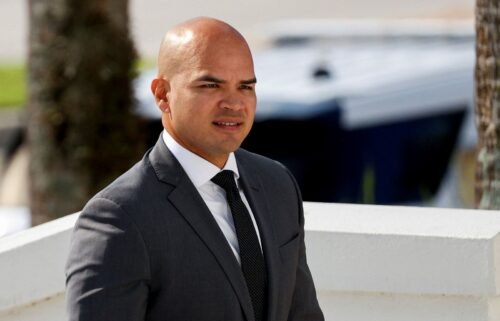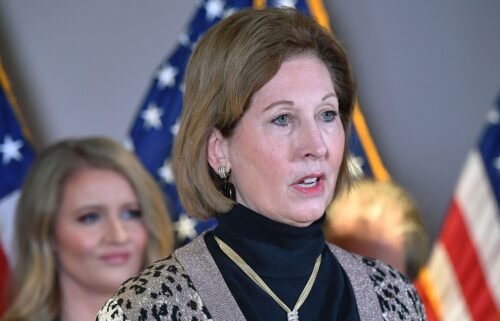Nobel winners: The only adult in the room was a child

The only adult in the room was a child.
That’s certainly how it felt this fall as heads of state, captains of industry and other world leaders convened for UN Week in New York, the chaotic epicenter of the fight against the climate emergency.
As speakers at scores of summits and symposia tiptoed around the edges of the crisis — often stripping meaningful language, goals and impact from solutions — the real action was being led by children. Young people such as Xiye Bastida, 17, of the People’s Climate Movement; Alexandria Villaseñor, 14, of Earth Uprising; Autumn Peltier, 15, chief water commissioner of the Anishinabek Nation; and Greta Thunberg, 16, Swedish climate activist.
These courageous teens not only spearheaded global climate strikes on September 20 and 27 (which catalyzed the participation of 7.6 million marchers), but also when it came to lambasting leaders gathered for the United Nations’ annual General Assembly, they did not hold their fire.
“This is all wrong,” said Thunberg, blasting heads of state assembled east of First Avenue. “I shouldn’t be up here. I should be back in school on the other side of the ocean. Yet you all come to us young people for hope. How dare you. You have stolen my dreams and my childhood with your empty words.”
Ms. Thunberg’s withering condemnation of do-nothing politicos was cheered by those of us who recognize the grave threats of the climate emergency. But we also believe that young people actually can provide hopeful antidotes to the plagues of the crisis. Young people just like her, Ms. Bastida, Ms. Villaseñor and Ms. Peltier, who can provide not just hope, but solutions.
We are convinced that youth-led solutions are crucial to saving their future and ours. Unencumbered by bureaucracy, conformity and conventional wisdom, young people have the raw, out-of-the-box thinking that could lead to the development of the “moonshot” ideas we need to save the planet.
Consider the work of Project Hyatech, a team of Kenyan students from Jaramogi Oginga Odinga University of Science and Technology who are turning the tables on an invasive plant species in the Lake Victoria region.
Water hyacinths are an aquatic plant with a gorgeous purple flower. But, as the women of Hyatech warned at a presentation in San Jose, California, in September, “Do not be deceived by (their) beauty.” Water hyacinths can grow as high as three feet above the water’s surface and are choking the life and the living out of what was even recently a thriving economy for local fishermen and their families. The plant, the team noted, can be blamed for a “70% loss of livelihood.”
But Hyatech has developed a solution to turn water hyacinths into biogas briquettes. The idea is so innovative it won them top prize at Kenya’s national finals of the Enactus World Cup, an annual solutions competition of 1,700 university Enactus teams in 37 countries.
And Enactus is just one of many youth-led competitions that focus on global solutions, from the Hult Prize to the UN Youth Assembly and One Young World’s Lead2030 initiative.
And then there is UNLEASH Innovation Lab, an annual convening of 1,000 millennial thought leaders from more than 150 nations who, in a different host country every year, form teams to compete for a solution to the world’s Sustainable Development Goals.
Solutions such as SaniHive, a modular toilet system for use in urban slums, which offers solutions to at least four SDGs, and which was inspired by bees — particularly the spatially optimized structure present in their hives. And solutions that have already had an impact, such as the UNLEASH-developed OneDay Health, which zeroes in on “health-care black holes” in Uganda and equips medical professionals with the training and “50 essential medications to treat 30 common conditions.” OneDay Health has already treated 20,000 patients, including 8,000 malaria cases, in areas previously off the map for medical care.
All of these ideas emanated from the wave of youth-led solution programs that are becoming more and more prominent. And young leaders continue to be a driving force for change, as is the case of Melati and Isabel Wijsen, teenage sisters who six years ago launched Bye Bye Plastic Bags in Indonesia. Their efforts earned them status as CNN Heroes’ Young Wonders, and culminated with the banning of plastic bags in their home island of Bali this year.
Ms. Thunberg, Ms. Bastida, Ms. Villaseñor, Ms. Peltier and the Wijsen sisters are living embodiments of SDG17, as they are bringing people together from around the world and inspiring young people to conceive and develop solutions that can preserve the planet that they will shortly inherit. We only hope that, despite the worst efforts of their older peers, youth will still have a planet to preserve.


